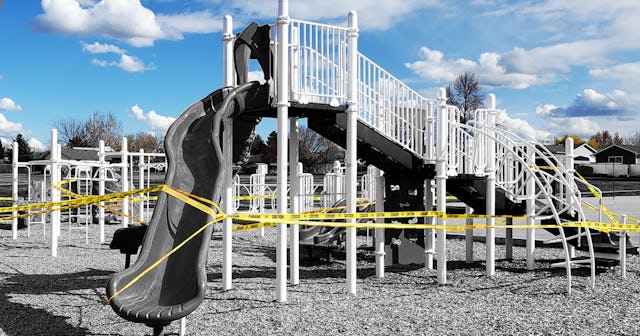Why Schools Need Funding, Even If They Don't Physically Reopen

On July 8th, President Trump went ahead and fired off this tweet: “In Germany, Denmark, Norway, Sweden and many other countries, SCHOOLS ARE OPEN WITH NO PROBLEMS. The Dems think it would be bad for them politically if U.S. schools open before the November Election, but is important for the children & families. May cut off funding if not open!”
Naturally, he didn’t take into account that in most European countries, COVID infections are on the downturn, whereas in the US they are on the rise. He also didn’t take into account that he most likely doesn’t have the authority to remove federal funding for schools.
“This is Congress’s responsibility, and Congress would push back on cuts that affected their states and schools,” Sean Corcoran, an assistant professor at Vanderbilt University who focuses on the economics of education and state and local public finance, told CBS News.
Furthermore, federal contributions comprise a fraction of the funding for public schools. State and local governments provide more than 90% of the revenue for elementary and secondary schools, according to an August 2019 report from the Congressional Research Service.
However, what can happen, as described by Future Ed, is the withholding of additional federal relief funding to schools who choose to do remote education. According to the proposed Health, Economic Assistance, Liability Protection and Schools (HEALS) Act, $70 billion will be allocated to K-12 schools. A third of it will be given out immediately — but for access to a share of the remaining two-thirds, schools must provide in-person education at least 50% of the time. For schools choosing a fully-remote option, or even a hybrid plan where students are in the school building less than half the week, no further funding is available.
Right now, it’s pretty difficult to not have a Facebook “truth warrior” sliding into your feed and saying that if their children’s school goes remote in the fall, they shouldn’t need federal funding, particularly any additional COVID-related financial stimulus. But the assumption above is short-sighted, and clearly doesn’t take into account all the factors and tools needed to educate children remotely.
One of the most glaring concerns is that of equity in technology. Many schools will choose to teach children remotely, and that will require all students to have computer and internet access. For those that don’t, the school should be granted relief funding for loaner computers and internet hot spots — and not to state the obvious, but technology isn’t cheap.
martinedoucet/Getty
The reality is, many families cannot afford (and/or access) the technology required for all their children to participate fully in online education. For example, in March, when my son’s school suddenly moved all their classes to remote education, many of his classmates did not have regularly available computers, often having to share one family computer between multiple family members. Or they didn’t have internet access outside of a cell phone or the library — and the library wasn’t open. The school did not have funding to provide computers and internet services to all their students, so they sent home paper packets.
Two to three times a week teachers were available via Zoom to meet with students, and answer homework questions. My son attended every one of these sessions, giving him a huge advantage in learning. But many of his friends did not have access to this resource, and ultimately were left to fall behind.
Falling behind can become a huge disadvantage for the student, surely. But it can also become costly long-term for the school. As students fall behind, they require remedial classes and one-on-one assistance to get caught up. Much of this is unavoidable. Some children are simply unable to learn on their own, for many reasons. And unfortunately, even with the proper technology, their parents may be essential workers and not available to help their children. Or in the case of most households, parents are not able to help with all subjects.
My son being able to meet with his math teacher last spring via Zoom saved his math grade. I’m a college graduate who just happens to be pretty bad with algebra, and I could help him with maybe half of the problems on any given assignment (and that’s a generous assessment). For a student who lacks the available technology to meet with his teacher, and little tutorial help in the home, it’s a near-guarantee of falling behind.
Access to technology is essential to student learning and progression, and if schools are underfunded for remote learning, what becomes of the students without access?
There are also the startup challenges of moving classroom instruction to remote. Teachers don’t just wake up one morning with a miraculous understanding of online class formats. In-class and remote are two very different pedagogies, and although a teacher might be amazing in the classroom, their in-person instruction would need to be translated to distance learning, and frankly that takes many hours on the part of the teacher, and technological training to do it right on the part of the school. These sorts of changes are costly, and workloads may be heavy, especially for teachers who have zero experience teaching remotely, or for those who have limited interactions with online learning tools such as Zoom and Blackboard.
And while we are at it, there’s the cost to the school for Zoom, Blackboard, and other online educational tools. Ultimately, the assumption that moving students to remote learning is easy and less expensive is a huge — and dangerous — misunderstanding of what it takes to educate our children without the classroom setting.
Schools that are offering remote options are doing so to protect the lives of their students and teachers. But without additional funding, they could be faced with choosing between the budget they need to do it properly, and the health and safety of children and teachers.
This article was originally published on